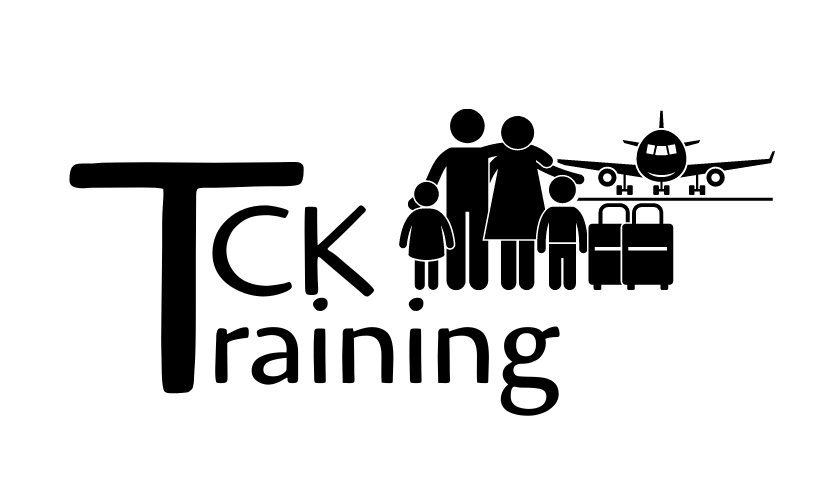Caution and Hope for International School Students
Caution and Hope for International School Students
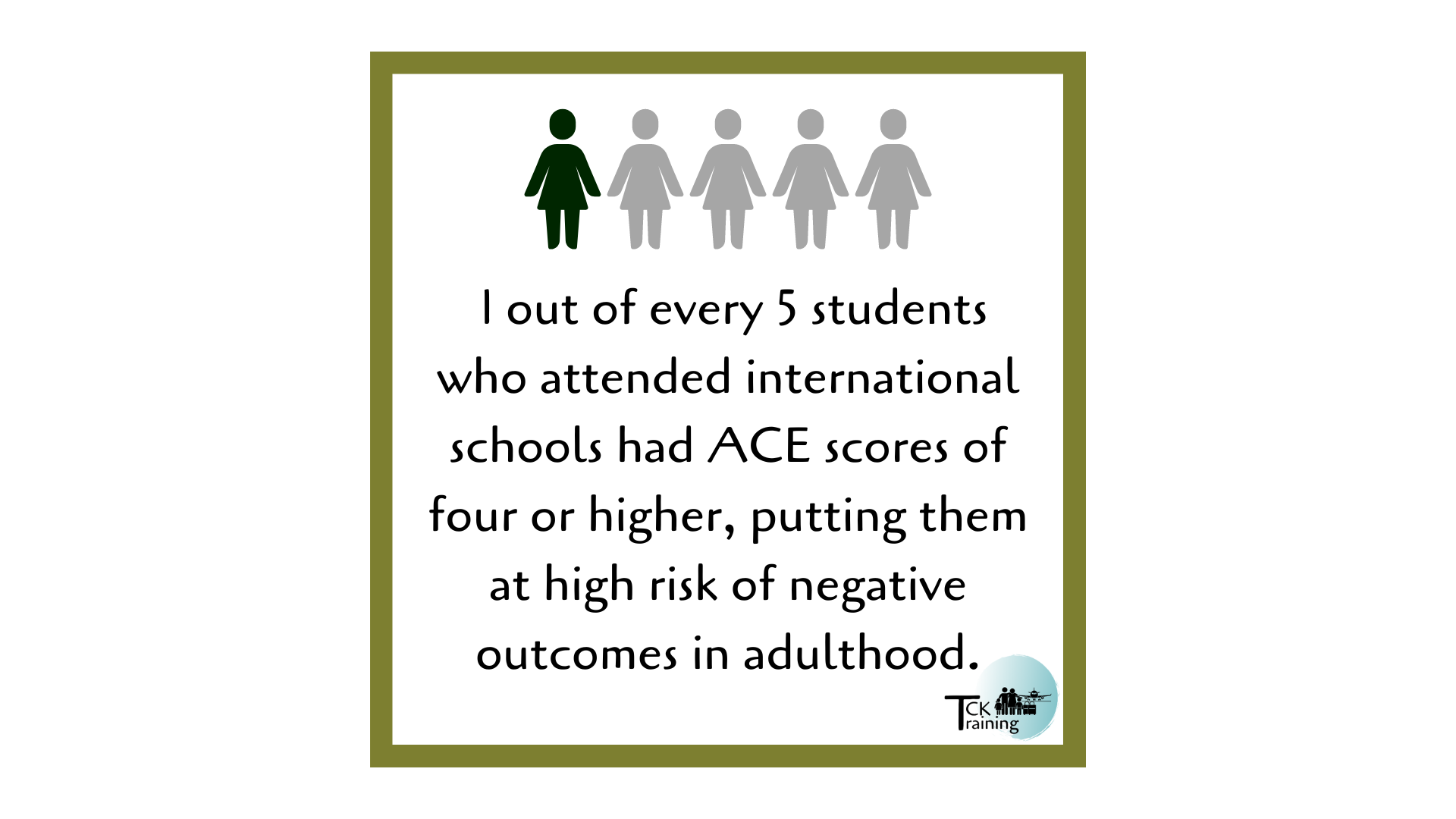
One of the demographics we used to sort the results from our 2021 survey of Adverse Childhood Experiences among TCKs was core educational experience. We asked respondents to list all types of schooling they received, as many TCKs move between schools - and school types - during childhood and adolescence. We also asked them to choose one category which represented the core experience they identified with their international education. The largest group was those who chose International School as their core educational experience.
Nearly one third (31%) of the 1,904 TCKs we surveyed attended international schools primarily. This is in addition to 20% who attended Christian international schools (including both larger Christian-worldview schools and smaller missionary schools). With deeper data analysis, it became clear that three educational types (Christian schools, homeschool, and boarding school) were primarily attended by missionary kids. When we looked at the non-mission kids in our sample, the percentage attending international schools rose to over half (53%).
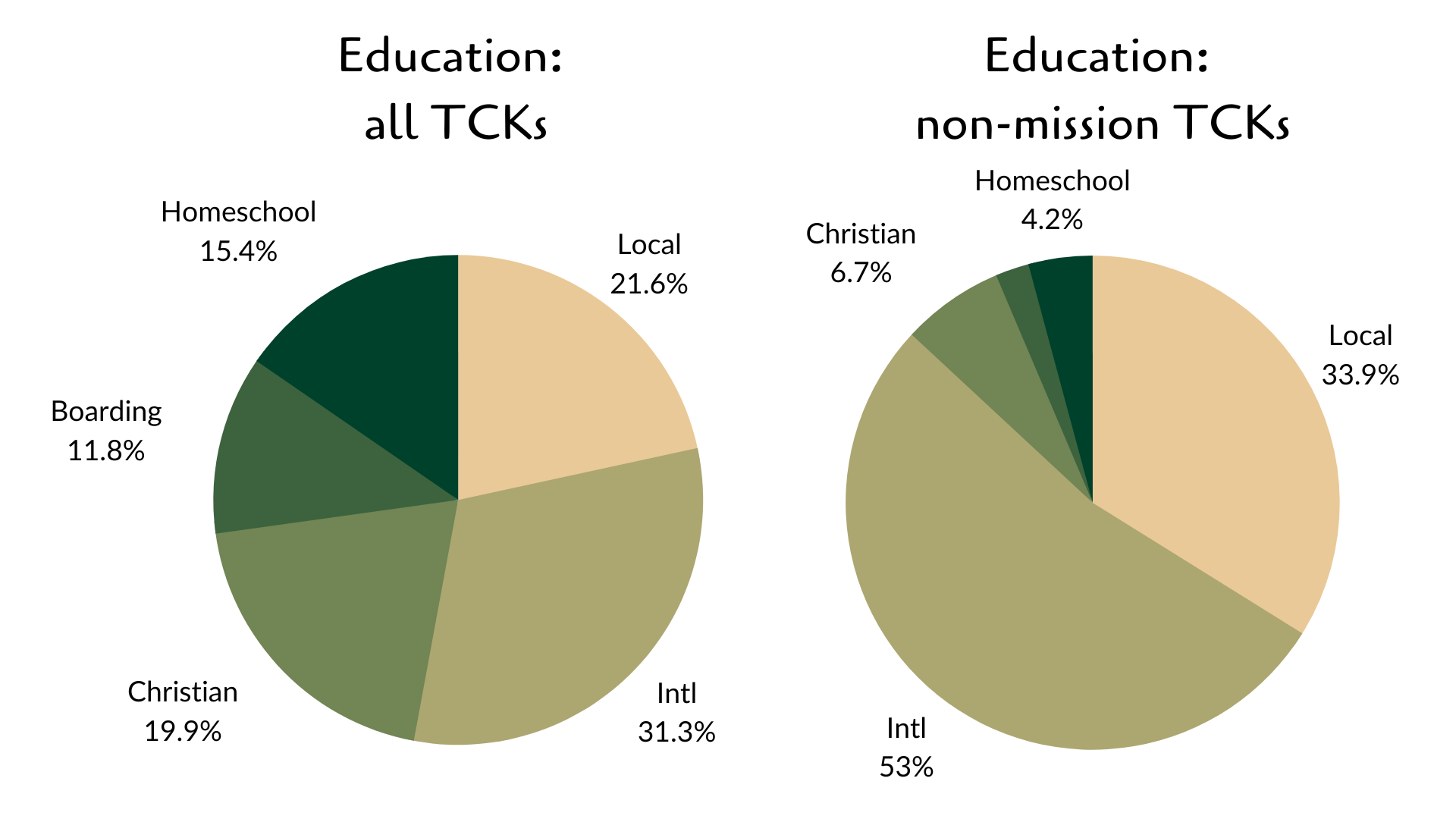
When the percentage of total TCKs is compared to school choice, we get context on the 25% of missionary kids in the international school student group. This is half the number we would expect to see if the the overall percentages held. Instead, we see that every other sector is much more likely to attend an international school than the mission sector.
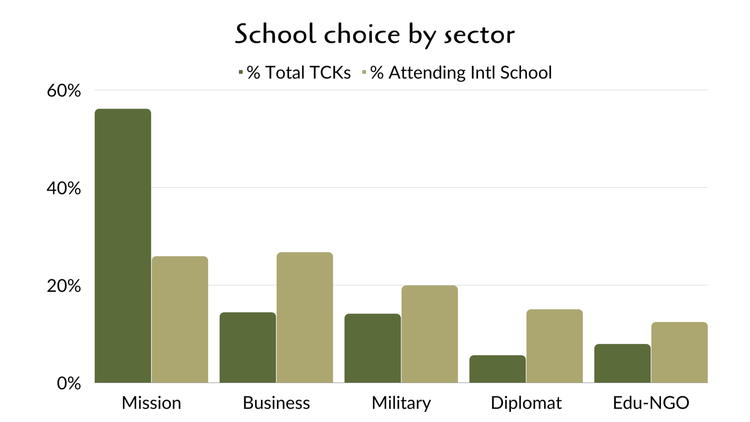
Age
60% of respondents who attended international schools were born after 1980, making it a slightly younger group than other sectors. This makes sense, given the increase in international school availability and enrolments over time. This is a similar age presentation as seen in the children of International Business Families, who primarily lived abroad due to corporate transfers - another phenomena that has increased over time. That said, among the international student group an impressive 12% were born before 1960.
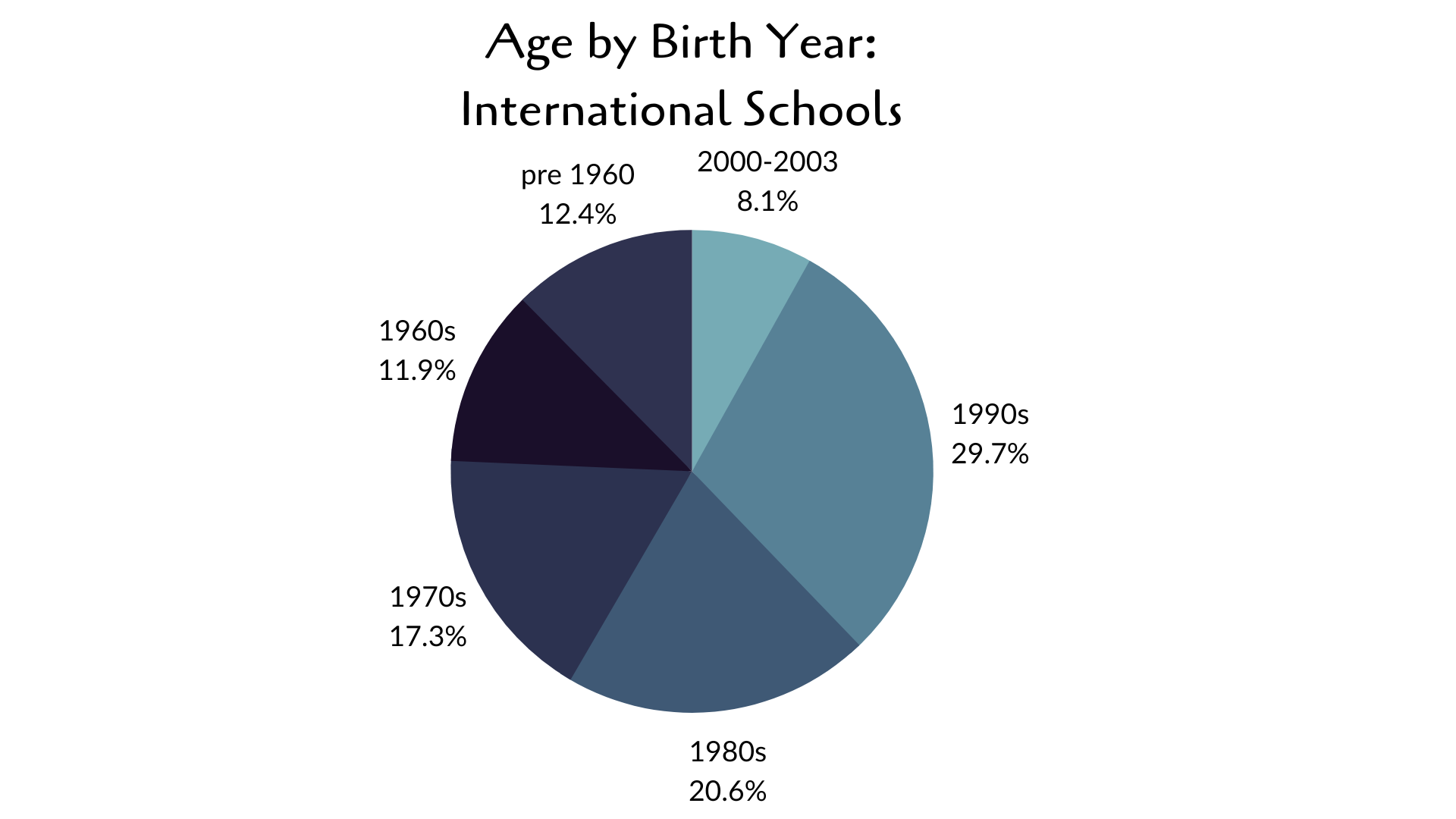
Mobility
International school students were more likely to live in multiple countries before age 18, but slightly less likely to experience extreme mobility generally (move locations/houses more than 10 times).
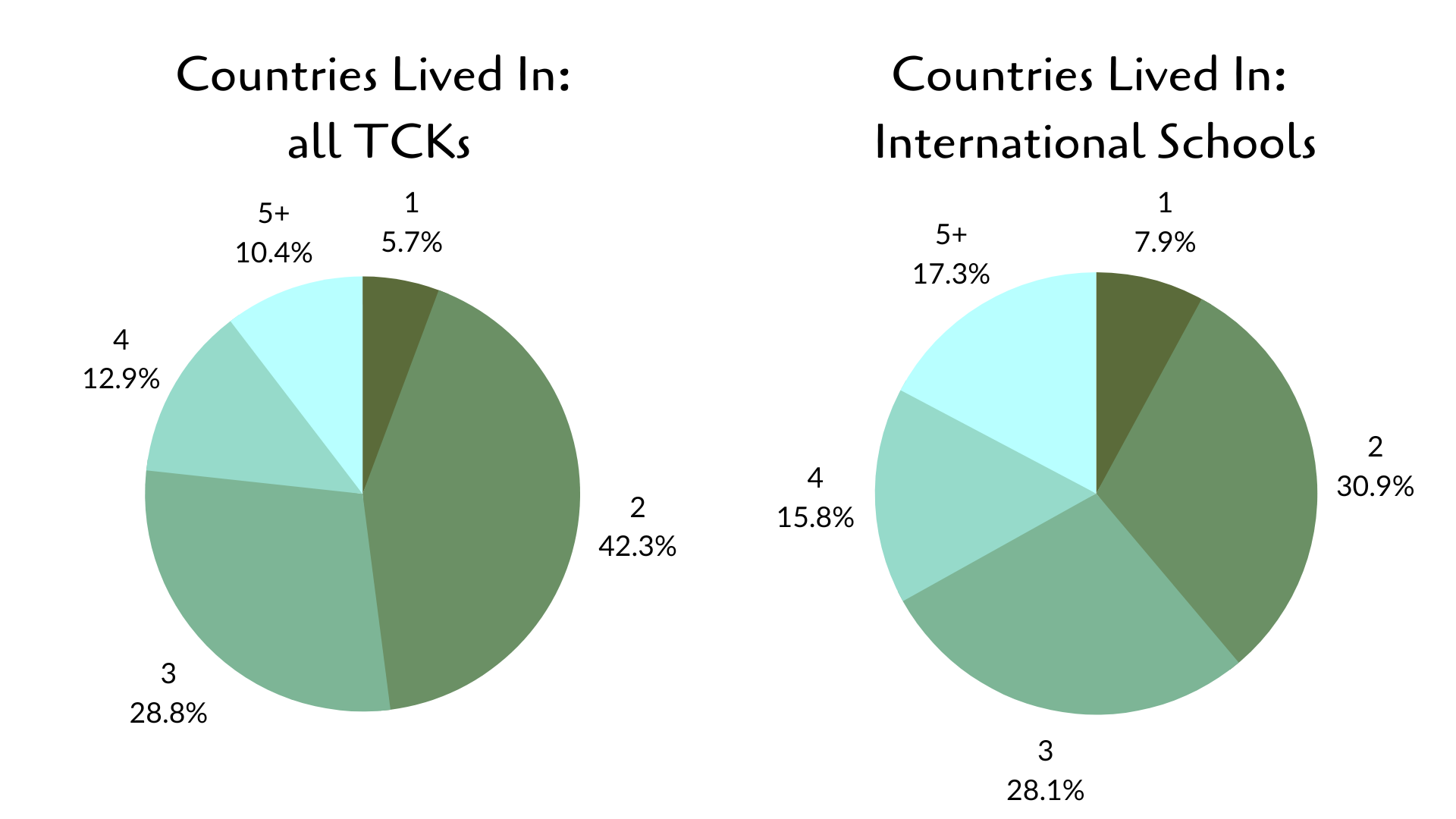
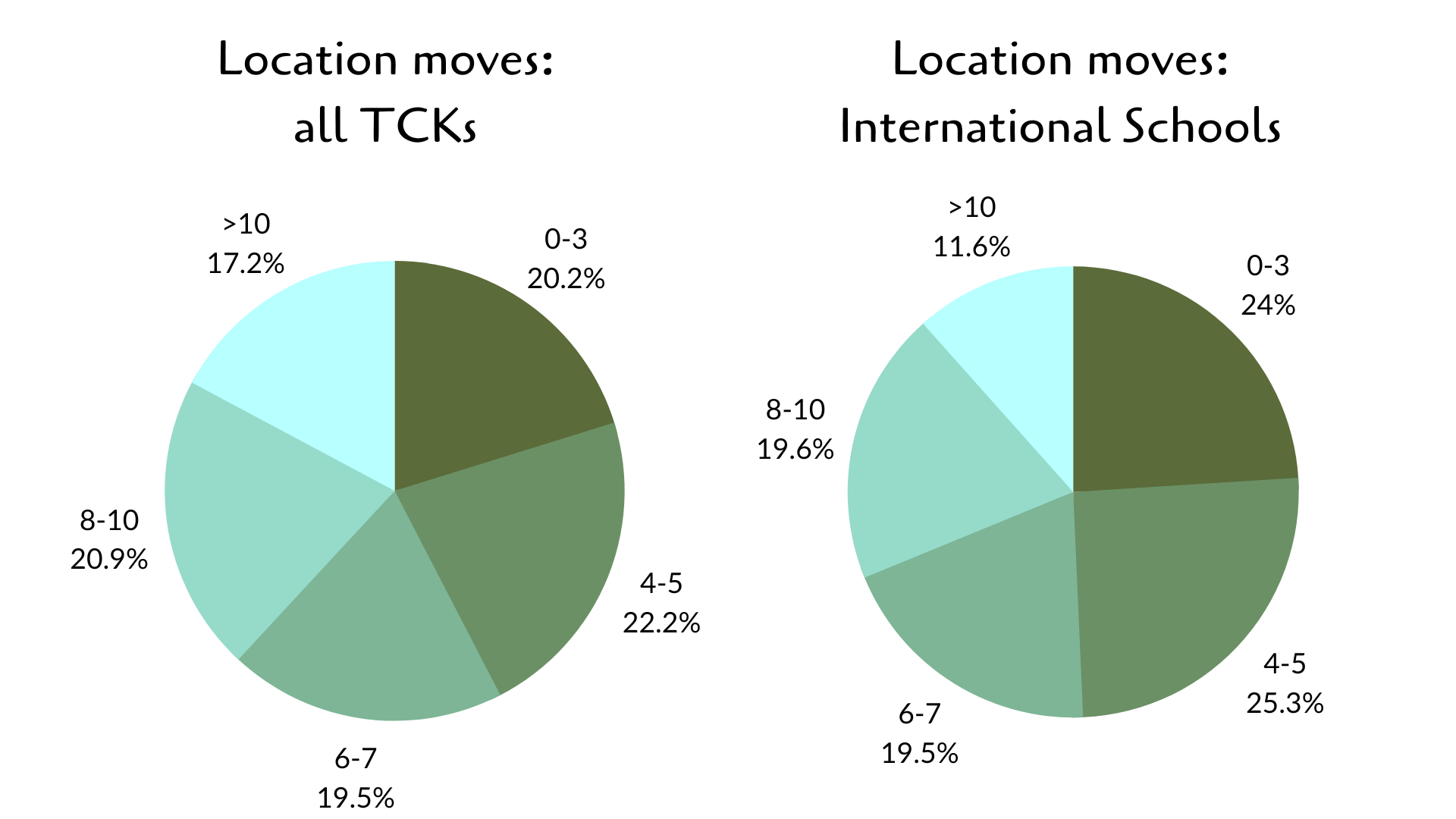
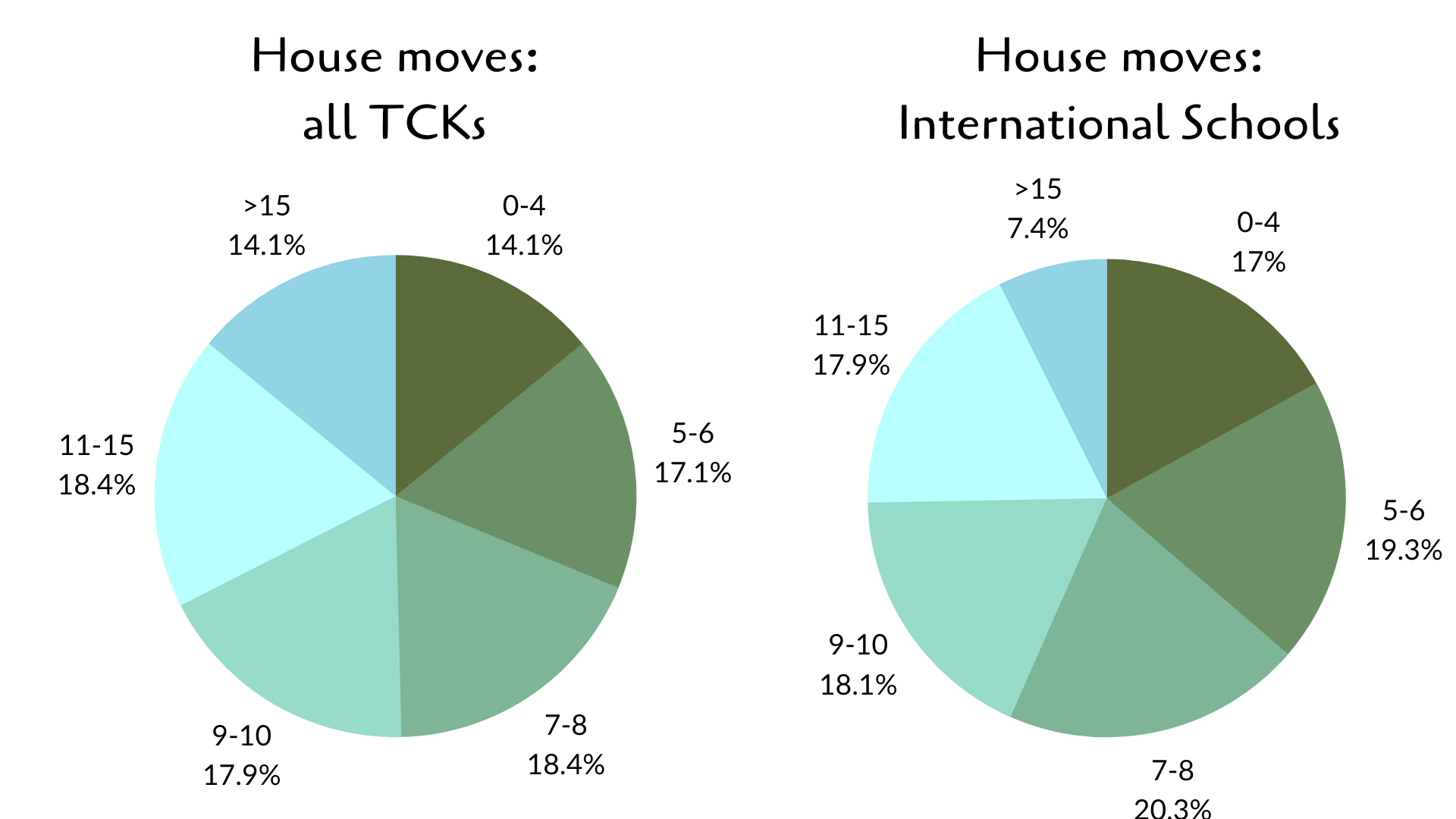
While 58% of business kids attended international schools, they form only 27% of the total group of international students in this sample, so their presence is not enough on its own to skew the sample.
ACE Scores
One of the key goals of our research was to attain a wide set of ACE scores we could look at through different demographic lenses. International school students, it turned out, had a very similar ACE profile to TCKs generally.
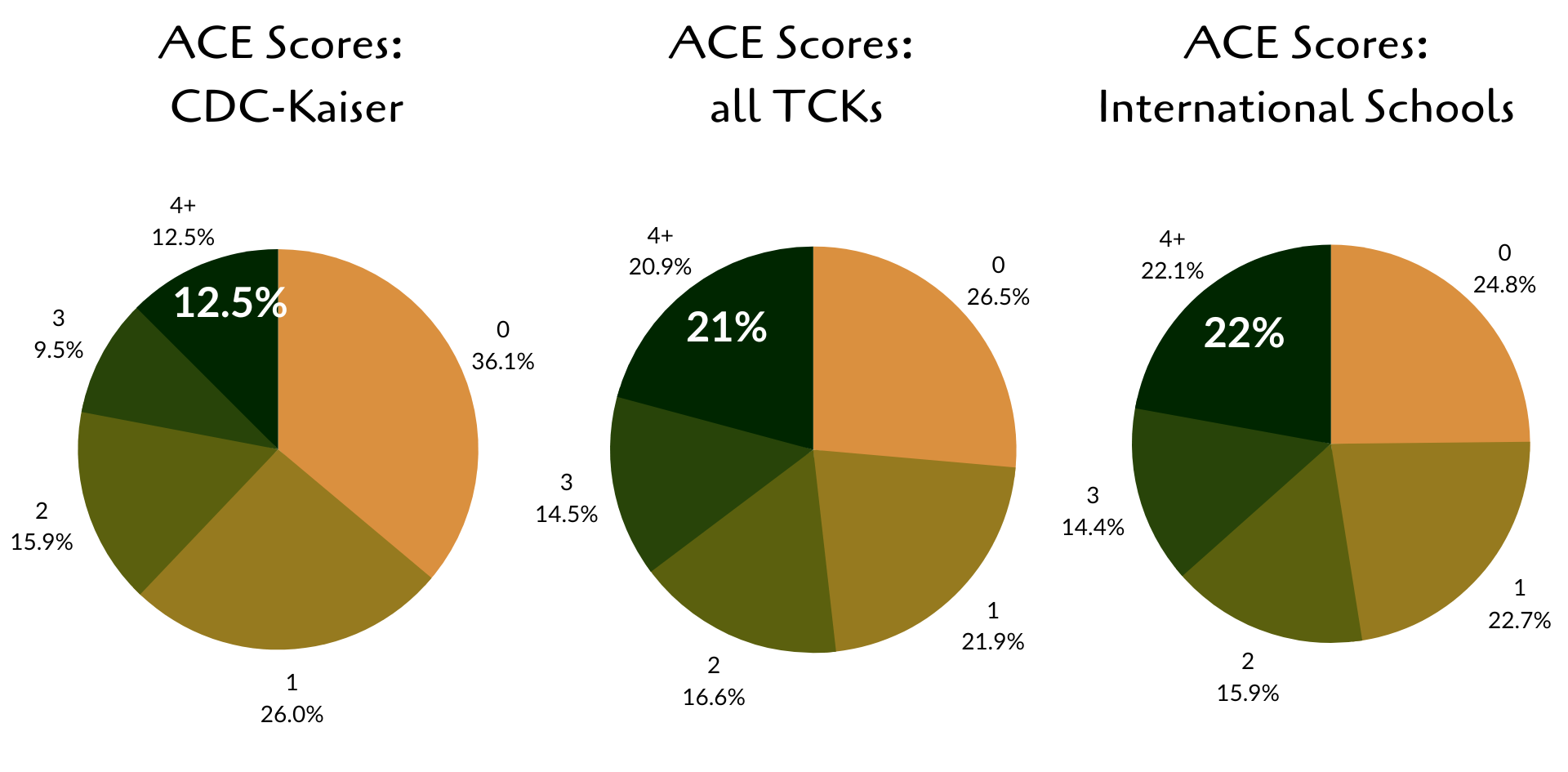
PCEs And Preventive Care
These statistics can be confronting, but we titled our white paper “Caution and Hope” for a reason. A child who goes through many Adverse Childhood Experiences (ACEs) can still thrive in adulthood if their childhood is also filled with Positive Childhood Experiences (PCEs). Existing research demonstrates that even when high ACEs are present, the presence of 6-7 PCEs drops the risk of depression in adulthood by 72%.
There are seven types of PCEs. Three of the seven are based in the home; four of the seven are based in experiences of community outside the home. International schools are often hubs for community, providing places for not only students but also entire families to meet and befriend one another. This potential role in providing a protective buffer for long term student wellbeing should not be underestimated.
Caution and Hope:
The Prevalence of Adverse Childhood Experiences in Globally Mobile Third Culture Kids
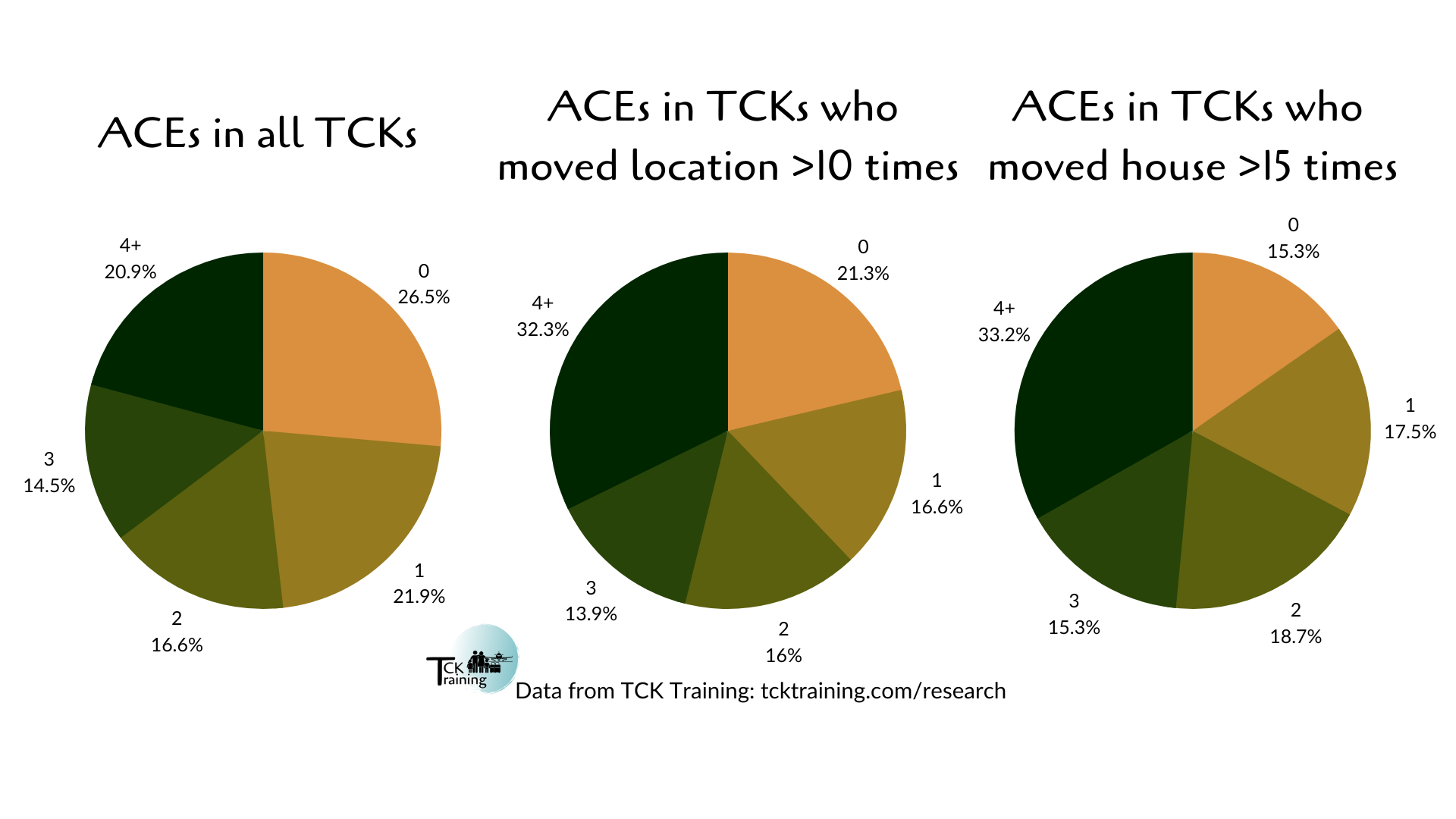
TCK Training is here to help. We have curricula, workshops (in-person and virtual), training (live and asynchronous), community groups, memberships, and everything else you need to support international students, both direct to students and through training your staff and your wider community.
Other blog posts in this series:
